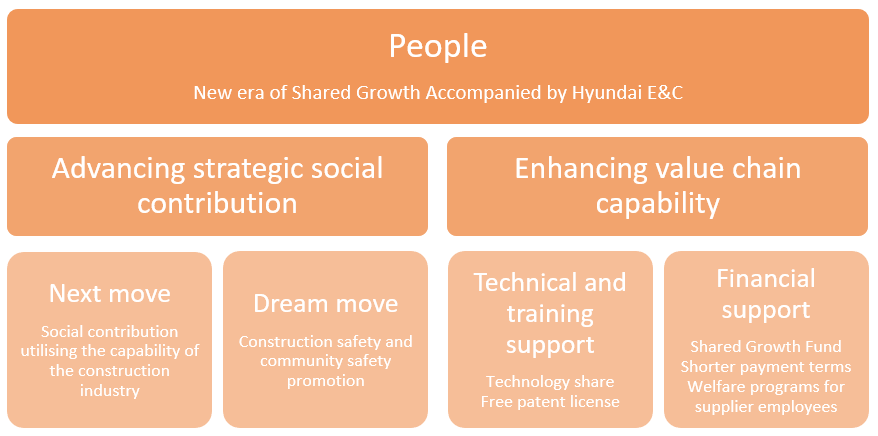Awards, whether they are decided by experts in the field or by a judging panel of peers, act as a form of recognition that you’re doing something right.
Receiving recognition for your work instils pride, not only in your team and organisation, but also shows customers, suppliers, and others in your ecosystem how high the standard is, and winning awards means you can be an example for others to learn from.
So, what is it that makes these award-winning companies stand out? According to awards and rankings such as the S&P Global Sustainability Yearbook Rankings, the Sustainability Leaders Survey and Sustainability, Environmental Achievement & Leadership (SEAL) Awards, there are three key activities chart-topping organisations do that you should start doing too:
As the effects of climate change have become painfully obvious over the past few years, the increasing sense of urgency has led many organisations to focus their sustainability efforts on carbon emissions. However, sustainability is more than just carbon, think of impacts such as waste, pollution, and water.
Moreover, sustainability includes social and economical factors that cover impacts such as modern slavery, child labour, diversity and inclusivity, and community development. It is those organisations that aim to improve on all relevant impacts that are topping the rankings and winning awards.
Hyundai Engineering & Construction Co., Ltd., is an excellent example of a leading sustainable organisation, ranking in the Gold Class of S&P’s 2022 Sustainability Yearbook. Their sustainability efforts revolve around four divisions: Prosperity, planet, people, and principle.
Each of these divisions cover specific sustainability improvement areas, such as realising eco-friendly construction, enhancing value chain capability, protecting human rights in the value chain, and advancing strategic social contribution. These in turn lay out specific improvement aims and activities.
A partial breakdown of the people division is shared below:

Figure 1 – Partial breakdown of sustainability improvement areas of Hyundai E&C Co., Ltd.
Widening your scope to cover all aspects of sustainability can be overwhelming at first. However, we can learn from the top performers in this area again. We do not have to act on all aspects in all areas at once, instead we should focus our efforts on the sustainability impacts in the areas where they are most critical. Top performers prioritise their efforts based on risk and materiality assessments.
Organisations at the start of their sustainability journey are ready to take responsibility for the impact they have on the environment and society. However, the extent of an organisation’s impact is oftentimes not clearly understood.
Early improvement efforts therefore usually only cover internal operations – think of substituting plastic cups for mugs and transitioning onto renewable energy. On the other hand, the top performers carefully examine the total impact of their activities and decisions, also considering their impact on customers and supply chains, and develop their strategy accordingly.
A good example is IKEA, who are one of the top five organisations most recognised for their sustainability leadership. Their approach to carbon reduction improvements ranges from the impact customers have on the environment by having to drive to the stores and IKEA’s own operations to carbon-intensive products and services in their supply chains.
IKEA then takes on carbon reduction across the value chain:
Action Sustainability supports organisations on their journey to implement sustainability across the value chain. Our case study from the HE Simm Group, explains how a value chain aligned strategy can be developed and implemented successfully.
When it comes to reducing the impact of climate change, time is of the essence. Corporate sustainability is an area where we must work together, sharing best practice and co-developing to achieve our 2030-2050 targets. Award-winning organisations have understood this and are proactive about collaborating with parties such as local governments, competitors, customers, and suppliers to elevate and accelerate their efforts.
SEAL award winner, Sanofi, is part of the Pharmaceutical Supply Chain Initiative (PSCI), a non-profit membership organisation that helps suppliers meet sustainability expectations from the pharma industry. Through this initiative, they share supplier audits and partake in working committees to develop solutions to current sustainability challenges, such as how to upskill suppliers.
Similarly, S&P Gold Class and SEAL award winner Unilever partners with a variety of stakeholders, amongst which are:
The top performers might be leading the change and spearheading these collaborative initiatives, but those still uncertain how to move forward will strongly benefit from partaking in initiatives to learn and benefit from the work done so far. The Supply Chain Sustainability School is an initiative that provides free learning resources for the construction industry to upskill themselves on sustainability.

This was posted in All Topics, Energy & Carbon, ISO 20400 Sustainable Procurement
Our Head of Climate, Dr James Cadman, shares his insights on how organisations can effectively embed carbon reduction into their sustainable procurement practices using the ISO 20400 framework.
Read Article
This was posted in All Topics, Sustainability Strategy
Senior Consultant, Imogen Player shares her top tips for what makes an effective double materiality assessment.
Read Article
This was posted in All Topics, Biodiversity, Wellbeing
Consultant Hattie Webb dives into some practical tips to enable anyone to embrace sustainable traveling. From choosing eco-friendly destinations to minimising waste and respecting natural habitats, these tips aim to reduce the environmental impact of commuting while providing a more meaningful travel experience.
Read Article